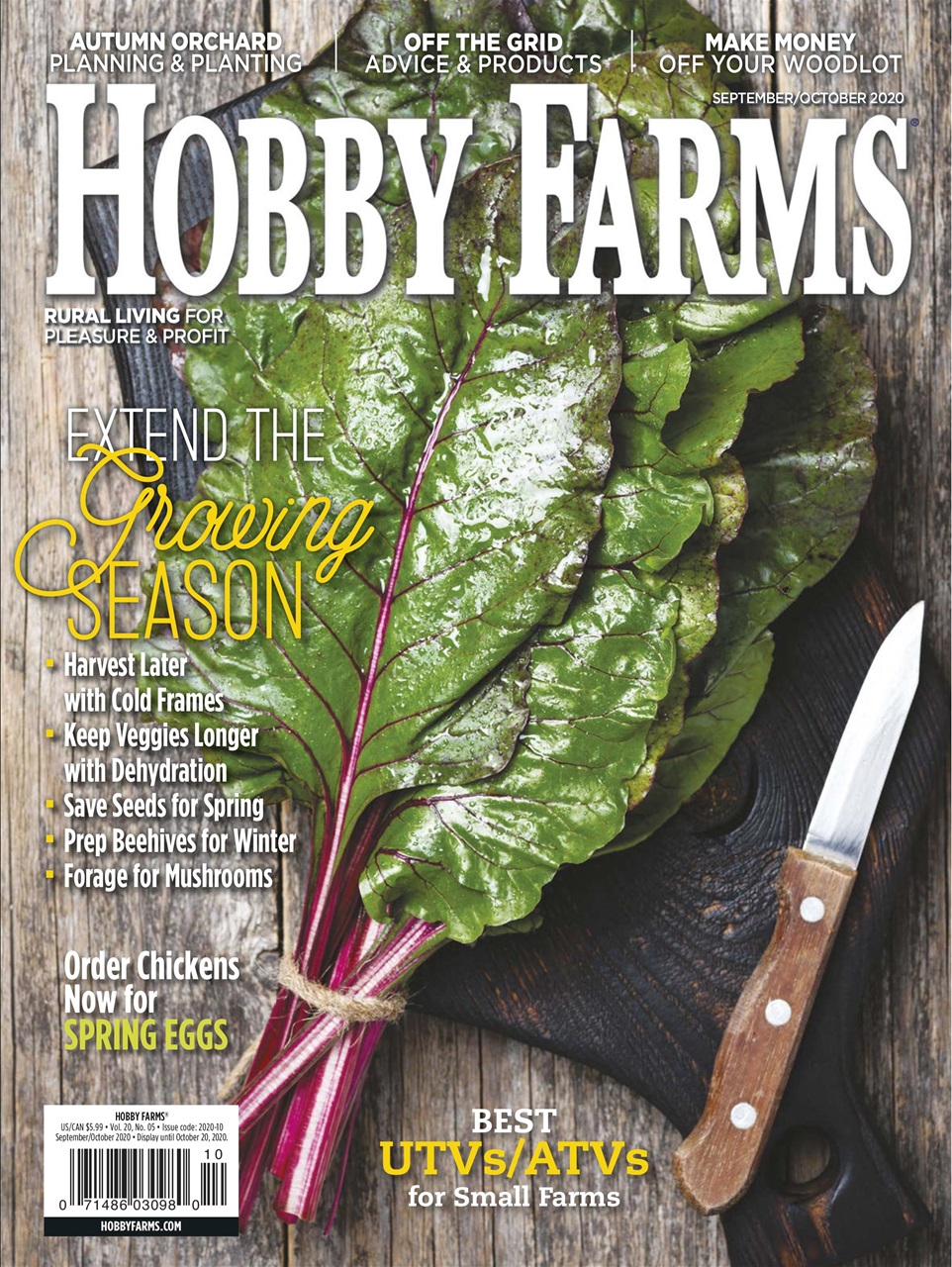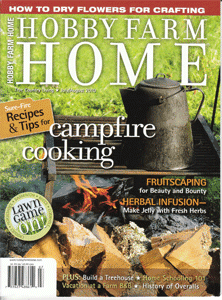


- #HOBBY FARM HOME MAGAZINE DECEMBER 2011 DRIVER#
- #HOBBY FARM HOME MAGAZINE DECEMBER 2011 FULL#
- #HOBBY FARM HOME MAGAZINE DECEMBER 2011 PLUS#
The farm has a hand drip winder that sits on the cart for retrieving and rolling out tape (see November 2009 GFM). T-tape is used for drip, with one or two lines per bed depending on the crop. Vegetable crops are watered with a combination of drip and overhead water. Even some of the vegetables, like squash and melons, are grown without supplemental water, and do surprisingly well with no summer rains. A significant part of the non-vegetable crops are dry farmed, with no supplemental irrigation. An 800’ well feeds the system and charges a buried 1” line, giving only about 20 gallons per minute. One of the main limitations for the farm is water. He gets the bags at Nolts Produce Supply. Danny, the farm manager, also recommends black plastic bags filled with dirt for holding down floating row cover. A Tapener tape gun for tying up plants to trellising and stakes saves time.

There are a few small pieces that the farm uses to save time. This mini version of a pickup truck is a nice size for getting into and out of the fields with minimal impact, and it makes trips back and forth to the barn easier, especially with heavy harvests. The one other piece of field equipment is a Kubota RTV 900 utility vehicle. A flame weeder with a backpack-mounted propane tank is used for pre-emergent weeding. We’re also working on cultivation attachments for the cart, which would make it into a kind of hand-pushed cultivating tractor. For widely spaced crops such as winter squash, a bow rake is used for keeping soil loose and weed free. Some of the inexpensive hula hoes the farm inherited had short handles so those were replaced with long push broom handles to make them more ergonomic. Cultivation is done with avariety of hoes, from eye hoes and hula hoes, to the well liked DeWitt diamond hoes and Rogue scuffle hoes. Transplanting is all done by hand and seeding is done with an Earthway precision seeder. Unfortunately, the wheel spacing on the tractor doesn’t work out well for using the furrowers on a convenient spacing, and it’s also difficult to use them for hilling, given the size of the tractor. The farm also has a simple tool bar with three furrowers, which are used to pull furrows for potatoes and leeks. Spreading amendments is done with a Scotts 3000 lawn drop spreader that was salvaged from a dumpster and was drilled out to allow more material to flow. The cart can also be outfitted with a rolling bed marker to mark out the planting lines, as well as inline spacing for transplants. Bed pathways are marked out using a custom garden cart with wheels on 3’ centers (see October 2010 GFM). Because the tiller is so wide and the plantings are typically small, we turn a single pass into two beds on 3’ centers (2’ bed tops). I was impressed that it doesn’t really impede visibility either, and with rear-view mirrors, it also saves some neck strain when making close passes with the tiller or mower.
#HOBBY FARM HOME MAGAZINE DECEMBER 2011 DRIVER#
A cab on a tractor protects the driver from dust, noise, sun and cold. This equipment is totally oversized for the farm’s needs, but it actually works pretty well and I have to say that having a cab on the tractor is a great thing that I never would have considered before. A combination of a 6’ Woods rotary mower, a 6’ Woods rototiller, and a 5-shank Schmeiser chisel plow are used to prepare beds for planting. I’ve also added some of the equipment selections to the farm so they may be familiar to regular readers of my articles, although quite a bit of the equipment preceded me so there are a few items that I haven’t yet written about.įor tillage and bed preparation the farm uses a Kubota L5030, which has a cab and front-end loader/front forks (54”center to center on wheels).
#HOBBY FARM HOME MAGAZINE DECEMBER 2011 FULL#
I helped set up the farm in its current form and chose to have more people working part time instead of just one or two working full time, and that arrangement has worked well for the last three years. Although the businesses are run separately, the restaurant is the sole customer for the farm, buying everything the farm can produce and providing input into the crop selection.Ģ011 is the fourth full season for the farm, which harvests year-round and employs three to four folks three days a week. The farm is owned by the same couple who owns Meriwethers Restaurant in Portland, 12 miles from the farm. Skyline Farm is located just outside of Portland, Oregon.
#HOBBY FARM HOME MAGAZINE DECEMBER 2011 PLUS#
I don’t want to leave out the smaller farms, though, and one farm I work with that falls into that category is Skyline Farm with about 1.5 acres in mixed vegetables plus small plantings of small grains and dry beans, berries, tree fruit, perennial herbs and cut flowers. In the past few issues, I’ve profiled the equipment choices of three farms from 16 acres to 90 acres.


 0 kommentar(er)
0 kommentar(er)
